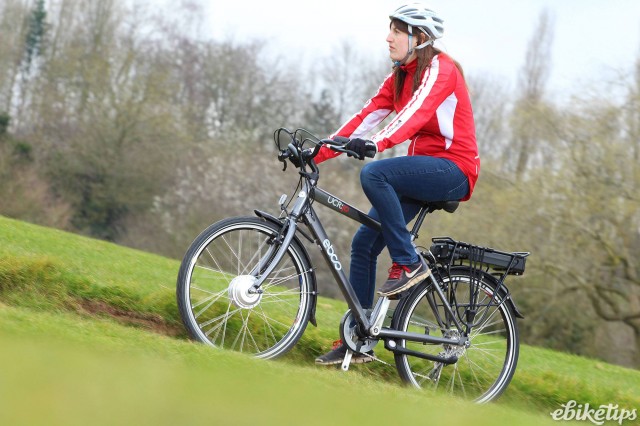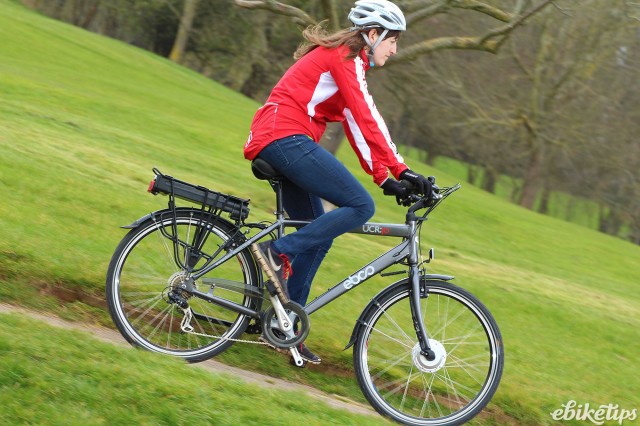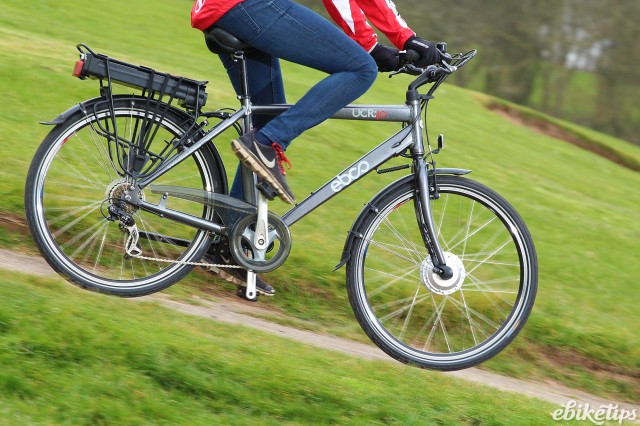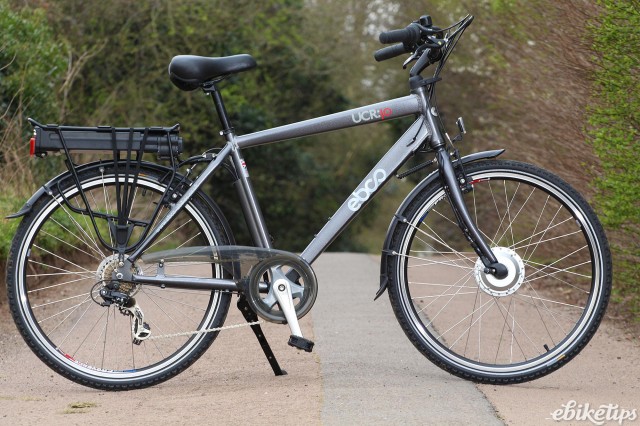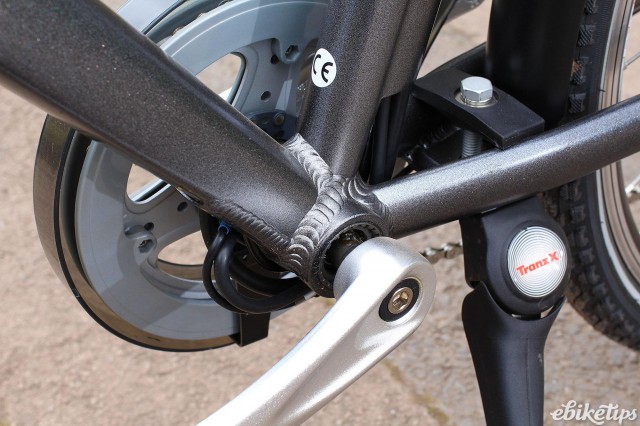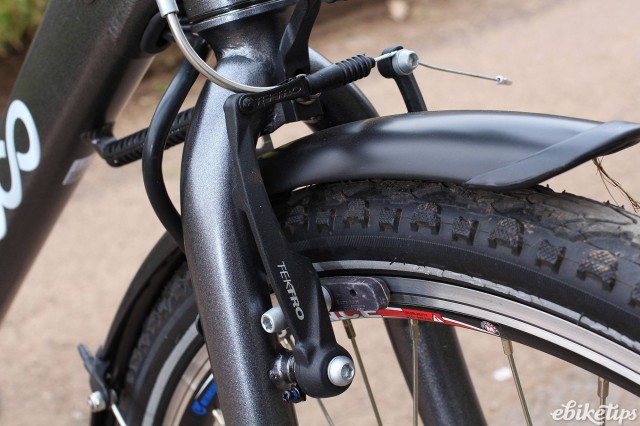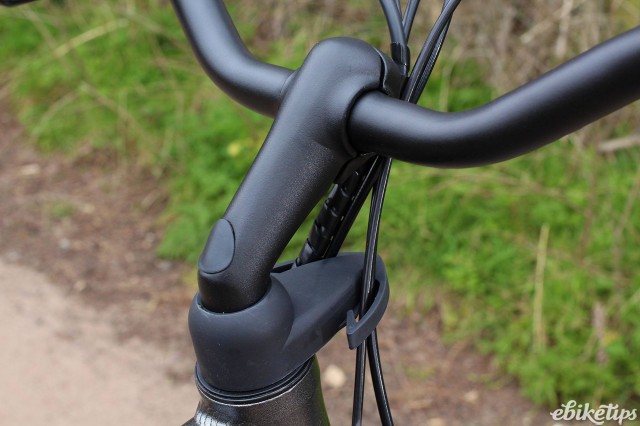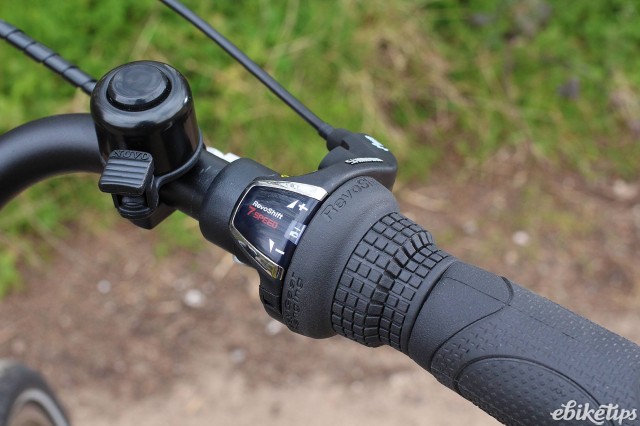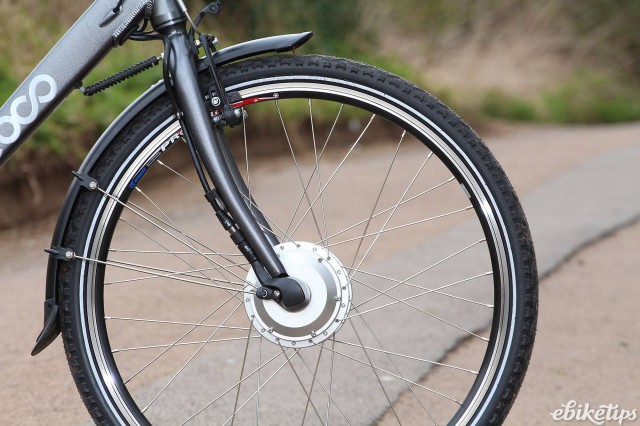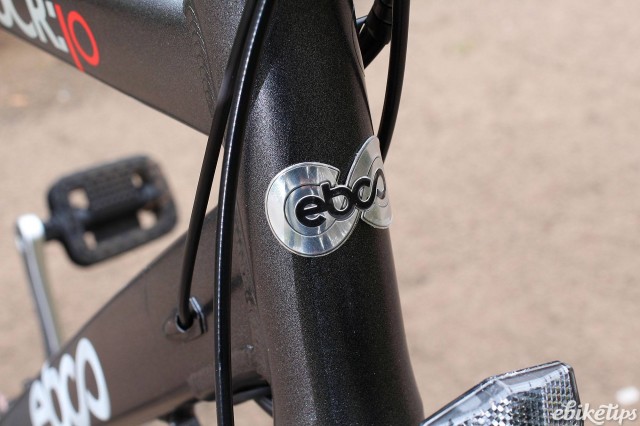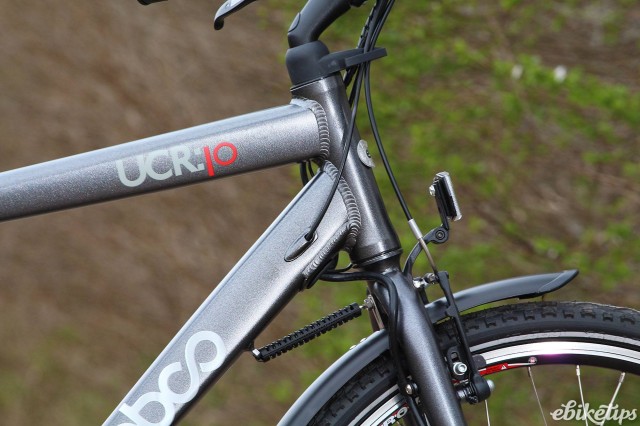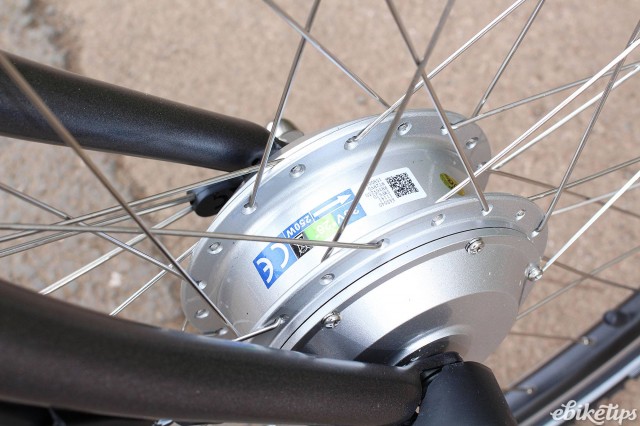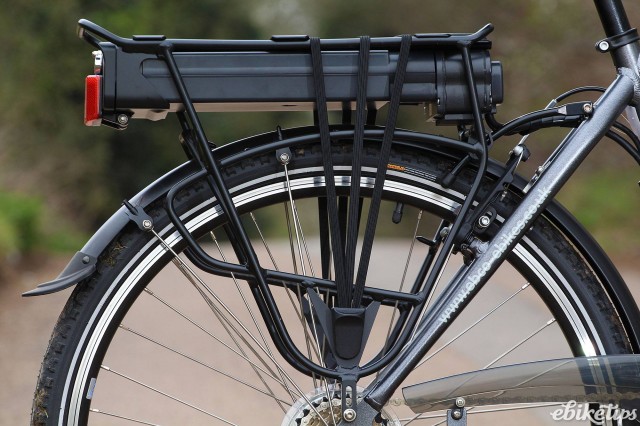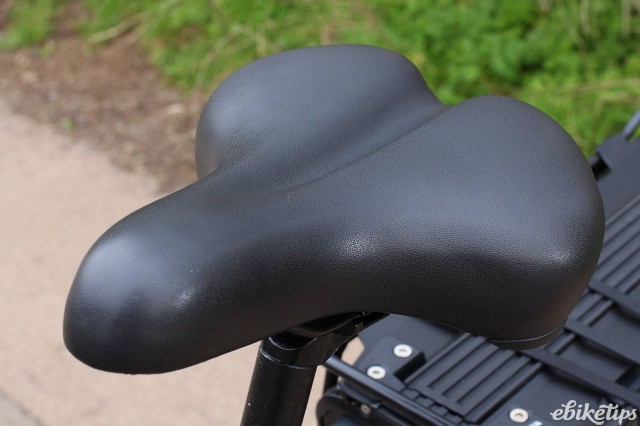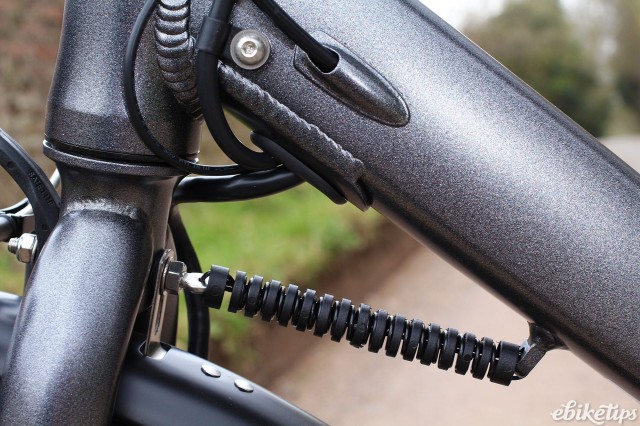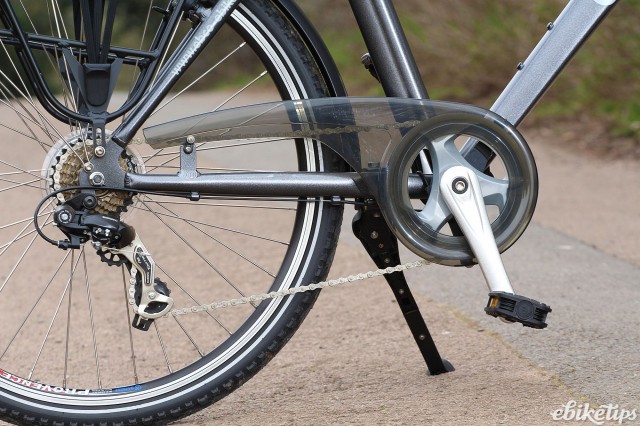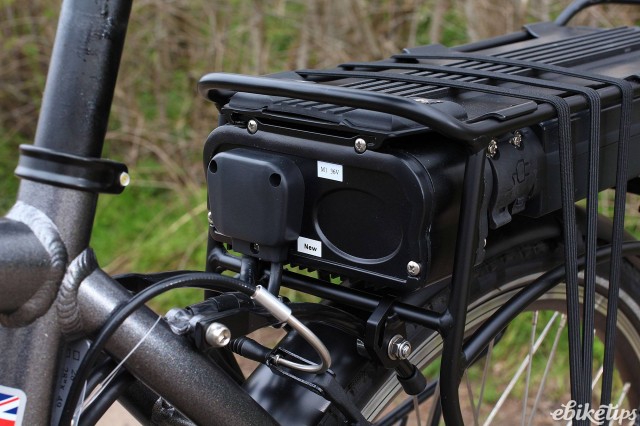EBCO UCR-10
Overview
- Great value
- Motor performs well
- Solid handling
- Controller is poor
- Brakes are spongy
- Quite a lot of motor lag from a standstill
EBCO’s UCR-10 is the company’s base-level model, and at £999 it’s within the £1,000 cycle-to-work limit. It’s also available as a step-through frame, the UCL-10. We like it: it's a well-specced machine for the money and shows how much you can get for under a grand these days.
Both bikes share the same build. The motor unit is a 250W Tranz-X front hub and it’s mated to a rack-mounted 318Wh battery. The UCR-10 gets a simple head unit with four LEDs that show the battery charge and also the power. When you change power mode the display switches to show you which mode you’re in, before reverting to battery level. There are four levels of assistance.
The UCR-10 doesn’t have a torque sensor, just a simple pedal sensor that detects the turning of the pedals and adds power depending on which mode you’re in. EBCO claim a range of 30-40 miles based on riding in Eco mode.
You get a 7-speed Shimano derailleur transmission with a Tourney rear mech and a Revoshift twist shifter. There’s a half chaincase to keep your trousers free from oil. Full mudguards and a single kickstand are standard equipment, and the UCR-10 features a neat headset cap that incorporates a cable tidy to keep everything looking neat. The stem is adjustable. Tektro V-brakes take care of the stopping, and the brakes feature a motor cut-out.
EBCO say that the UCR-10 is “suitable for both commuters and leisure riders making it the ideal introduction to the superb world of modern e-bikes.” We got the chance to pilot the UCR-10 on a couple of test rides over a variety of terrains ranging from roads to canal towpaths and unsurfaced trails. Here are our thoughts...
Justin says: The 26” wheel UCR-10 looks a bit work-a-day. The silver paint draws you close only for the basic running gear to dash hopes of a slick and zippy ride. But judging books by covers is a well-known folly and one we fell foul of in this case. Frankly, we weren't expecting the TransX motor to feel as powerful and rideable as it is. With the Lithium Ion wick turned up full, this little bike takes off up the road with gusto.
The UCR-10 also felt a lot more balanced than we were expecting. The rear mounted battery, while positioned quite high in comparison to some mid-mount battery packs, didn't upset the handling too much when paired with front hub motor. Front wheel drive can cause the old brain to worry for a few seconds with horror images of torque induced front wheel washouts, but the reality is the grip is fine when on anything other than very loose gravel. Only then can you find the front wheel wanting to understeer. If it does, just ease off the power to the pedals and the front behaves again.
The difference between the electric modes is quite marked, which is just as well, because it can be a bit hard to see where you're at with the modes thanks to the small and hard to read LED lights on the bar mounted dash. We just kept hitting the power up button if we got confused. TransX could do with looking at other systems for a good lead on a clear, easy to read on the move layout.
The UCR-10 chugged along fairly happily in Eco mode. Sure it's going to get you to the post office with less effort, but for all the faff of having electricity with you on the journey, you might as well use the power in a more advantageous manner. When let off the leash in the sporty modes, the bike comes alive and proved to be a fun and engaging ride. The bike looks and feel pretty rugged, it's MTB DNA means it dealt with a solid stretch of tow path and even some light (dry) off road excursions with relative ease and even relish. The tyres were fast rolling and surprisingly grippy across a wide range of surfaces.
For under a thousand quid, you're asking a lot for an e-bike to be anything more than OK, but the EBCO UCR-10 is much more than that. With a full complement of mudguards and a rack for your kit, It's a contender for the best city e-bike under £1,000 that we've ridden.
Justin Loretz has been at the cutting, and often bleeding, edge of mountain biking in the UK for more time than is polite to mention. He's been technical editor for Britain's leading MTB titles, and spent plenty of time on the tarmac too.
Dave says: It used to be that case that you’d be accepting some serious compromises on a sub-£1k electric bike, but when you ride something like the UCR-10 you realise that’s no longer really the case. It’s neatly built, easy to ride and offers a well-balanced assistance that’ll get you where you’re going with a minimum of fuss.
The TranzX hub motor is a pretty eager companion, especially in the higher power modes. There’s a bit more lag that you really want away from a standstill, but when it kicks in it's happy to pull you up to its maximum assist speed. The bike uses a simple pedal sensor that just checks to see if the pedals are going round, rather than a torque sensor which measure how hard you’re pushing. That means you can lazily spin the pedals without applying any effort and the motor will continue to give you a shove, which can be very pleasant if you fancy a break on the flat.
The four power modes simply dictate how much of the motor’s power is available to you when you turn the pedals. They’re sensibly spaced and you can easily turn down the assistance on the flat to eke out the battery life. You won’t get a massive range out of the 318Wh battery, probably nearer 25 miles in rolling real-world conditions than the 30-40 that EBCO claim, but it’ll be plenty for most people’s likely usage, unless you’re planning some long-distance leisure rides or you have a lengthy commute.
The bar-mounted display lets the bike down a bit. The puny LEDs aren't really visible in sunlight and the whole thing feels rather flimsy. It works okay but it's certainly not a highlight. The brakes are another weak point with the flexy cable housings and cheap V-brake callipers giving a spongy feel. They'll stop you though, so it's not a big worry.
The bike handles very well. That’s helped no end by the fact that EBCO have specced a simple, rigid fork. Too often inexpensive e-bikes use a cheap telescopic suspension fork that makes the steering a bit vague and the bike prone to diving forward under braking. That’s not an issue here and the big chamber tyres offer plenty of cushioning for broken tarmac or unsurfaced leisure routes. Overall it’s an enjoyable experience and a great value bike. Recommended.
